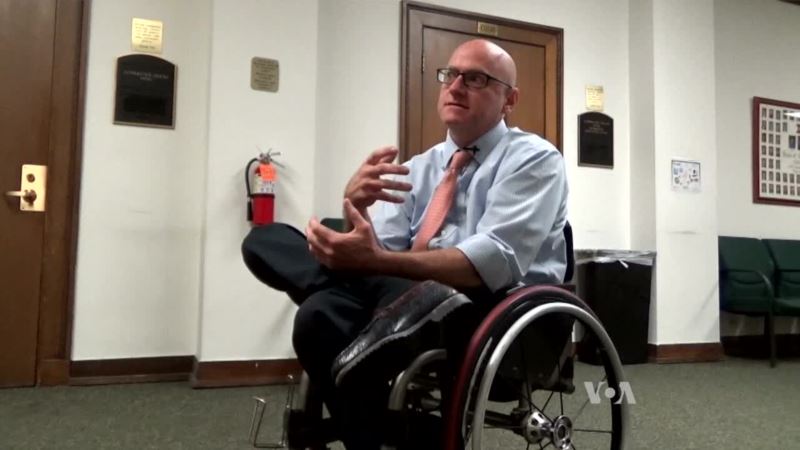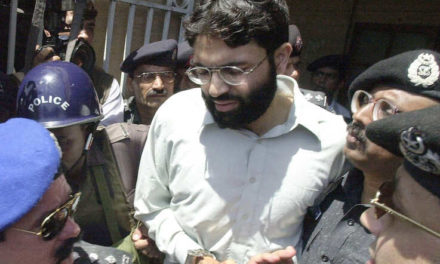Being in a wheelchair has never slowed Jon Forbes down. But for 14 years after his spinal cord injury, Forbes says something else nearly broke his will to live. It was pain – electric shocks of pain – in areas of his body that were paralyzed. “It was horrible. Excruciating. And it never stopped," he recalled. "You wake up, it’s there. All day, it’s there. You go to bed, it’s there. ” According to the World Health Organization, roughly 25 million people around the world live with a spinal cord injury. The injuries are well-known for causing paralysis and difficulty with using legs and hands. Less recognized is the common side effect Forbes described — neuropathic pain, which creates feelings of electric shocks and stabs in parts of the body that no longer have regular sensation. In roughly 10 percent of cases, this neuropathic pain can be so relentless, victims consider suicide. Forbes did. “I had tried pretty much every kind of drug, tried exercise, tried you name it. Anything and everything to try and get this pain to stop. And it wouldn’t. And I was working at an investment bank and decided this was it." He starts to tear up as he remembers that time of his life. "Quit my job, and decided, this was going to be the end. I just couldn’t take it.” But then, he learned about a Denver neurosurgeon who uses spinal surgery to stop so-called “suicidal pain.” The last resort Scott Falci acknowledges, “Patients, when they ultimately come to me, I’m kind of a last resort.” As the chief neurosurgical consultant at Denver’s Craig Hospital, which specializes in spinal cord injury rehabilitation, Falci has helped hundreds of paralyzed patients who suffer excruciating neuropathic pain. “You could cut them with a knife, they wouldn’t feel it. You could put a blow torch on their foot. I’m being extreme here. They wouldn’t feel it," he stresses. "Yet they’ll tell me, 'my foot is on fire, as if someone has set it on fire.' 'Battery acid’s on my foot', and they can be very site specific. They’ll say, 'I have electricity running from my hip to my knee,' or 'the bottom of my foot, it’s on fire.' 'At the ankles it’s somebody stabbing me with a knife.' They feel the pain precisely in very specific areas, but if you were to touch them on those areas, they couldn’t tell you.” For spinal cord patients, conventional pain therapies frequently fail, so often doctors suggest the pain is “in their head.” But, Falci says, it's actually in their spinal cord. He resolves it with surgery. Revolution in the OR Under lamps as bright as the sun, half a dozen surgical assistants help Falci for hours, just to reveal the spinal cord. He explains, "You have to open up the skin, the muscles, you have to get to the skeleton, and you have to remove some bone in the back of the skeleton to even get to see the spinal cord." Finally, the spinal cord is revealed, glistening, white, alive. Falci seeks out pearl-colored “root entry zones,” each the size of a small button, filled with thousands of cells. These are where nerve bundles bring sensations from the body and root into the spinal cord. “These nerve cells that come from different parts of the body don’t travel all the way up to the brain," he notes. "They connect first with other nerve cells in the spinal cord and let them communicate signals to the brain.” Using a pin-sized electrode, Falci carefully probes two millimeters into these areas, to touch relay nerves in the spinal cord that speed sensory information toward the brain. Mostly he gets a calm electric signal. Then, there’s a spike, the sign of hyperactive nerve cells. Falci calls them "hot spots" — seizure-like areas of the nerve cells firing with high energy when they shouldn’t be firing. He says hot spots can trigger suicidal pain. “So you can imagine, the hyperactive areas of the spinal cord, almost every second of their life, bombarding their brain and telling them they’re with pain.” Using heat, Falci kills each hot spot. There can be hundreds, so meticulously, he moves up the spinal column, killing hot spots. He also does something that neurosurgeons have considered out of the question. “We didn’t believe the spinal cord below the level of injury could possibly send signals to the brain," he explains, but even if an injury has completely cut the spinal cord in half, Falci finds and kills hot spots below the injury. He explains that nerve signals coming in from the body can detour around a spinal cord injury. He likens this to how highway drivers detour onto local lanes to avoid an accident, then after the accident, they merge back on the highway. When it’s hyperactive nerve signals creating a detour in the body, Falci says they carry false pain signals. So by killing hot spots below the injury, he eliminates more pain. “Eight-five percent of the time, we can get rid of sharps, burns, electricals, stabs.” New lease on life Falci says this can be life changing. It was for Jon Forbes, who got this surgery two years ago, and reports, “I’m a pretty happy person these days.” Just two months after the operation, Forbes landed a new job — as the deputy treasurer for the state of Colorado. “I’m not 100% without pain," he admits, "but I can live, and I want to live, which is . . . thank God for saving my life, Dr. Falci.” Falci plans to publish new research that maps this “detouring” nervous system. His work makes him confident that there’s more to discover about how the human body deals with injury and pain.
New Surgical Techniques Help Relieve Pain from Spinal Injury






